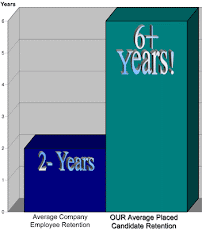Sunday
Age Discrimination Regulations And Recruitment: 3 Steps To Avoiding The Pitfalls
Age Discrimination Regulations And Recruitment: 3 Steps To Avoiding The Pitfalls
Posted by Jim StroudSeptember 21, 2008Age Discrimination Regulations And Recruitment: 3 Steps To Avoiding The Pitfalls
by: Ian Mann
The Employment Equality Age Regulations 2006 came into force on 1 October 2006 requiring employers to revolutionise the way they advertise for jobs, interview applicants, and make final selection for employment. These Age Discrimination Regulations will require us to stop judging a person’s ability to do a job by their age. After all, age, in this highly mobile labour market does not always mean experience or know-how.
The Age Discrimination Regulations will prohibit discrimination on grounds of age or “perceived age” in the workplace. However, it should be noted that the Regulations are limited to employment and vocational training. They do not extend, generally, to the provision of goods and services. There would be nothing unlawful for example for a newspaper to publish an article which made disparaging comments about a person’s age. Within the workplace, employers and employees alike will need to select staff for their abilities and not their age. Employers will have to ensure that they update their staff handbooks to include age as a form of discrimination to ensure that employees are aware of their behaviour. The training of line managers will in particular be very important.
Regulation 7 makes it unlawful for an employer, in relation to employment by him at an establishment in Great Britain, to discriminate against a person:
(1) In the arrangements he makes for the purpose of determining to whom he should offer employment.
(2) In the terms on which he offers that person employment.
(3) In any refusal to offer employment.
Once employed, it is also unlawful for an employer to discriminate against an employee in relation to:
(1) The opportunities which he offers him for promotion, transfer, training or receiving any other benefits.
(2) Dismissal or subjecting him to any other form of detriment.
Step 1: Requiring Age Limits and Age Ranges
The marketplace has previously advertised for applicants of certain age ranges. This will (in the main) now be unlawful. In practice, there are very few jobs which require an individual to be of a particular age. However, it is not unlawful for an employer to require relevant experience to undertake the job in appropriate circumstances. Experience is gained over time and inevitably older candidates for a job are more likely to be able to demonstrate that they have acquired experience than younger applicants.
Step 2: Experience Requirements
Many job specifications quite properly require prior experience for a variety of reasons. However, prior experience is no guarantee as to suitability and an employer will always be best served by identifying the skills and competencies required successfully to fulfil the role rather than simply requiring a certain number of years experience. Identifying and accurately defining those skills and competencies will avoid any claims of age discrimination. This policy must be applied equally for recruitment, transfer or promotion.
Where a role requires not only technical skills and competencies but other attributes that might relate to the personality of the applicant, it will be all important to ensure that these personality requirements are described in an age neutral way. For example, seeking a “mature” person to fulfil a role could be understood to mean that an older worker is required. Some commentators have expressed concern that using the word “dynamic” could understood as requiring a young person.
Step 3: Graduate Recruitment
Graduates are of course required for particular roles. However, care should be taken as to how recruitment is undertaken. Attendance at graduate fairs, such as milk-runs, will inevitably only be attended by those who are about to graduate or have recently graduated. Consideration should be given to widening the net and considering additional or even alternative methods of recruitment, whether through advertising to different markets or through appropriate recruitment agencies. Wherever an employer chooses to recruit, consideration should be given to whether that method of recruitment may disproportionately favour a particular age group.
The Exception: “Genuine Occupational Requirements”
Regulation 8 provides that it is not unlawful to discriminate on grounds of age in recruitment where there is a genuine age related occupational requirement, having regard to the nature of the employment or the context in which it is carried out. An employer would have to show, however, that a characteristic related to age is a genuine and determining “occupational requirement” and that the policy is a proportionate one i.e. that the occupational requirement could not be achieved in some other non-discriminatory way.
However, not many jobs will benefit from the exception. It will not generally be open to employers to argue that they may require an employee of a specific age or age group, because “it’s what sells”. It is unlikely that the courts will endorse an employer’s decision to employ only young employees at a trendy clothing boutique, for example. It is, however, likely that employment for modeling a certain look on the catwalk or acting an age-specific role in a play will quite properly fall under the genuine occupational requirement provision. As litigation emerges the approach of the courts will give us a better indication of how these Age Discrimination Regulations will be interpreted.
Conclusion
Ensuring that job requirement is not age related or can be fully justified coupled with a transparent system of selection will minimize the risk of costly claims in the Employment Tribunal.
Copyright 2006 Ian Mann
Related Posts
Out with the old, in with the new, another case of age discrimination
UK bans certain words from job descriptions
Tne United Nations on Global Discrimination
What if the guy you just hired wants to be a girl?
Resources for Talent Acquisition, Hiring and Recruitment
Bookmark It
Posted by Jim StroudSeptember 21, 2008Age Discrimination Regulations And Recruitment: 3 Steps To Avoiding The Pitfalls
by: Ian Mann
The Employment Equality Age Regulations 2006 came into force on 1 October 2006 requiring employers to revolutionise the way they advertise for jobs, interview applicants, and make final selection for employment. These Age Discrimination Regulations will require us to stop judging a person’s ability to do a job by their age. After all, age, in this highly mobile labour market does not always mean experience or know-how.
The Age Discrimination Regulations will prohibit discrimination on grounds of age or “perceived age” in the workplace. However, it should be noted that the Regulations are limited to employment and vocational training. They do not extend, generally, to the provision of goods and services. There would be nothing unlawful for example for a newspaper to publish an article which made disparaging comments about a person’s age. Within the workplace, employers and employees alike will need to select staff for their abilities and not their age. Employers will have to ensure that they update their staff handbooks to include age as a form of discrimination to ensure that employees are aware of their behaviour. The training of line managers will in particular be very important.
Regulation 7 makes it unlawful for an employer, in relation to employment by him at an establishment in Great Britain, to discriminate against a person:
(1) In the arrangements he makes for the purpose of determining to whom he should offer employment.
(2) In the terms on which he offers that person employment.
(3) In any refusal to offer employment.
Once employed, it is also unlawful for an employer to discriminate against an employee in relation to:
(1) The opportunities which he offers him for promotion, transfer, training or receiving any other benefits.
(2) Dismissal or subjecting him to any other form of detriment.
Step 1: Requiring Age Limits and Age Ranges
The marketplace has previously advertised for applicants of certain age ranges. This will (in the main) now be unlawful. In practice, there are very few jobs which require an individual to be of a particular age. However, it is not unlawful for an employer to require relevant experience to undertake the job in appropriate circumstances. Experience is gained over time and inevitably older candidates for a job are more likely to be able to demonstrate that they have acquired experience than younger applicants.
Step 2: Experience Requirements
Many job specifications quite properly require prior experience for a variety of reasons. However, prior experience is no guarantee as to suitability and an employer will always be best served by identifying the skills and competencies required successfully to fulfil the role rather than simply requiring a certain number of years experience. Identifying and accurately defining those skills and competencies will avoid any claims of age discrimination. This policy must be applied equally for recruitment, transfer or promotion.
Where a role requires not only technical skills and competencies but other attributes that might relate to the personality of the applicant, it will be all important to ensure that these personality requirements are described in an age neutral way. For example, seeking a “mature” person to fulfil a role could be understood to mean that an older worker is required. Some commentators have expressed concern that using the word “dynamic” could understood as requiring a young person.
Step 3: Graduate Recruitment
Graduates are of course required for particular roles. However, care should be taken as to how recruitment is undertaken. Attendance at graduate fairs, such as milk-runs, will inevitably only be attended by those who are about to graduate or have recently graduated. Consideration should be given to widening the net and considering additional or even alternative methods of recruitment, whether through advertising to different markets or through appropriate recruitment agencies. Wherever an employer chooses to recruit, consideration should be given to whether that method of recruitment may disproportionately favour a particular age group.
The Exception: “Genuine Occupational Requirements”
Regulation 8 provides that it is not unlawful to discriminate on grounds of age in recruitment where there is a genuine age related occupational requirement, having regard to the nature of the employment or the context in which it is carried out. An employer would have to show, however, that a characteristic related to age is a genuine and determining “occupational requirement” and that the policy is a proportionate one i.e. that the occupational requirement could not be achieved in some other non-discriminatory way.
However, not many jobs will benefit from the exception. It will not generally be open to employers to argue that they may require an employee of a specific age or age group, because “it’s what sells”. It is unlikely that the courts will endorse an employer’s decision to employ only young employees at a trendy clothing boutique, for example. It is, however, likely that employment for modeling a certain look on the catwalk or acting an age-specific role in a play will quite properly fall under the genuine occupational requirement provision. As litigation emerges the approach of the courts will give us a better indication of how these Age Discrimination Regulations will be interpreted.
Conclusion
Ensuring that job requirement is not age related or can be fully justified coupled with a transparent system of selection will minimize the risk of costly claims in the Employment Tribunal.
Copyright 2006 Ian Mann
Related Posts
Out with the old, in with the new, another case of age discrimination
UK bans certain words from job descriptions
Tne United Nations on Global Discrimination
What if the guy you just hired wants to be a girl?
Resources for Talent Acquisition, Hiring and Recruitment
Bookmark It
Subscribe to:
Post Comments (Atom)














No comments:
Post a Comment